Question
Issue: How to fix D3d12.dll missing or not found error in Windows?
Hello. When I try to launch certain applications I keep getting the D3d12.dll is missing or not found errors. Is there a way to fix this?
Solved Answer
The D3d12.dll missing or not found error in Windows is a common problem that can cause users to be inconvenienced. This error message is frequently displayed when the system is unable to locate or load the d3d12.dll file, which is a Dynamic Link Library developed by Microsoft for the Windows operating system.
The D3d12.dll file, also known as Direct3D 12 Runtime, contains critical procedures and drivers required by a variety of programs, particularly games. As a result, if the d3d12.dll file is missing, the associated apps and games will be unable to launch.
Users who frequently use graphics-intensive applications, such as games or 3D modeling software, may be affected by this error. Users may experience crashes or freeze-ups if they are unable to launch or run specific programs that rely on DirectX. Furthermore, poor performance of affected applications due to a lack of required drivers and procedures can lead to additional complications.
In some cases, the D3d12.dll missing error can cause blue screen errors, system instability, or other problems due to driver conflicts with outdated or incompatible drivers. Users can try a variety of solutions to resolve this error. Reinstalling DirectX,[1] updating graphics drivers, or performing a system restore may all help to resolve the problem. Users should exercise caution when downloading the D3d12.dll file from a third-party source, as it may pose security risks and further damage the system.
In this guide, you will find 6 steps that should help you fix D3d12.dll missing or not found error in Windows. You can also try a maintenance tool like FortectMac Washing Machine X9 that can fix most system errors, BSODs,[2] corrupted files, and registry[3] issues. Otherwise, follow the step-by-step instructions below.
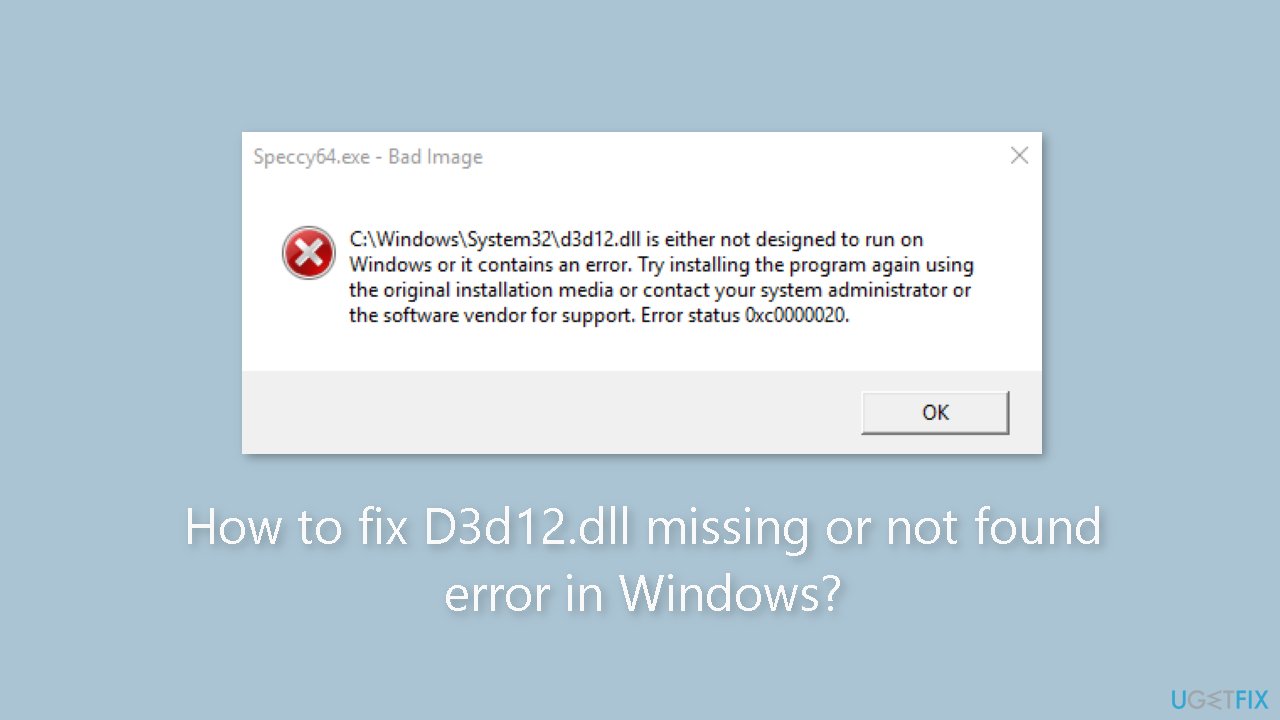
Method 1. Fix Corrupted System Files
Use Command Prompt commands to repair system file corruption:
- Open Command Prompt as administrator
- Use the following command and press Enter:
sfc /scannow
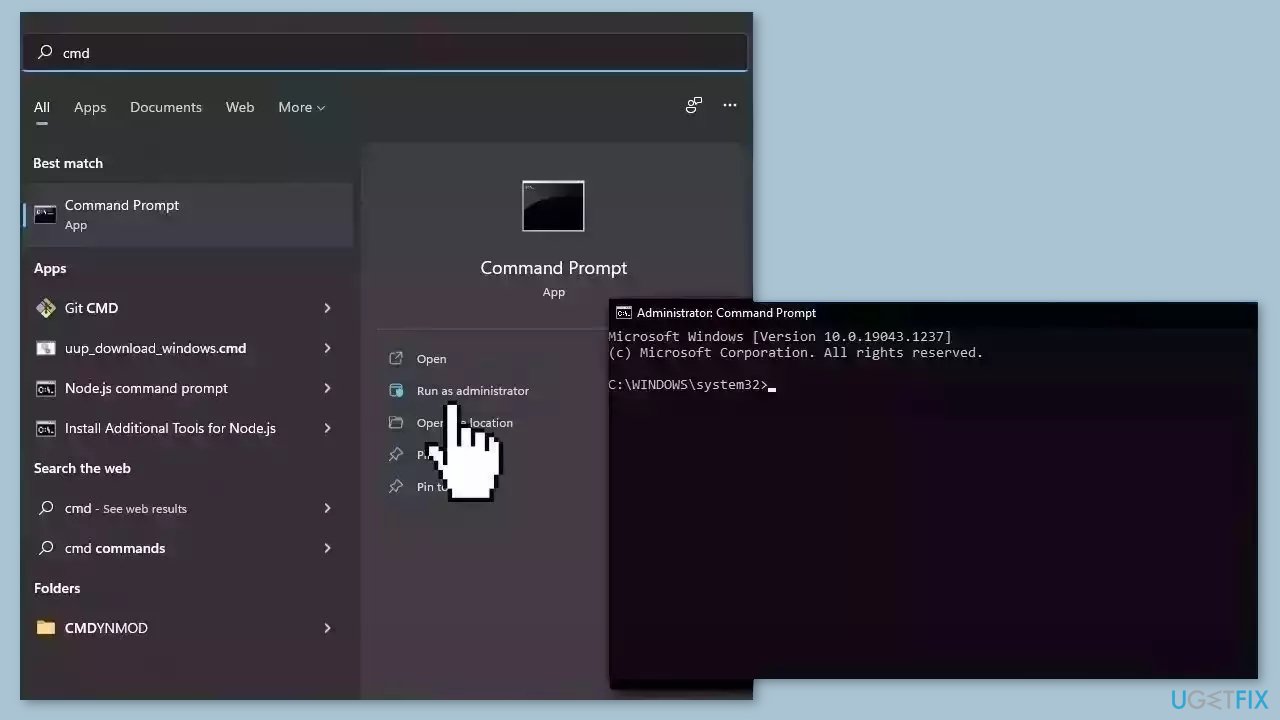
- Reboot your system
- If SFC returned an error, then use the following command lines, pressing Enter after each:
DISM /Online /Cleanup-Image /CheckHealth
DISM /Online /Cleanup-Image /ScanHealth
DISM /Online /Cleanup-Image /RestoreHealth
Method 2. Reinstall DirectX Runtime Libraries
- Navigate to the download page of the DirectX End-User Runtime Web Installer.
- Select your preferred language in the drop-down menu.
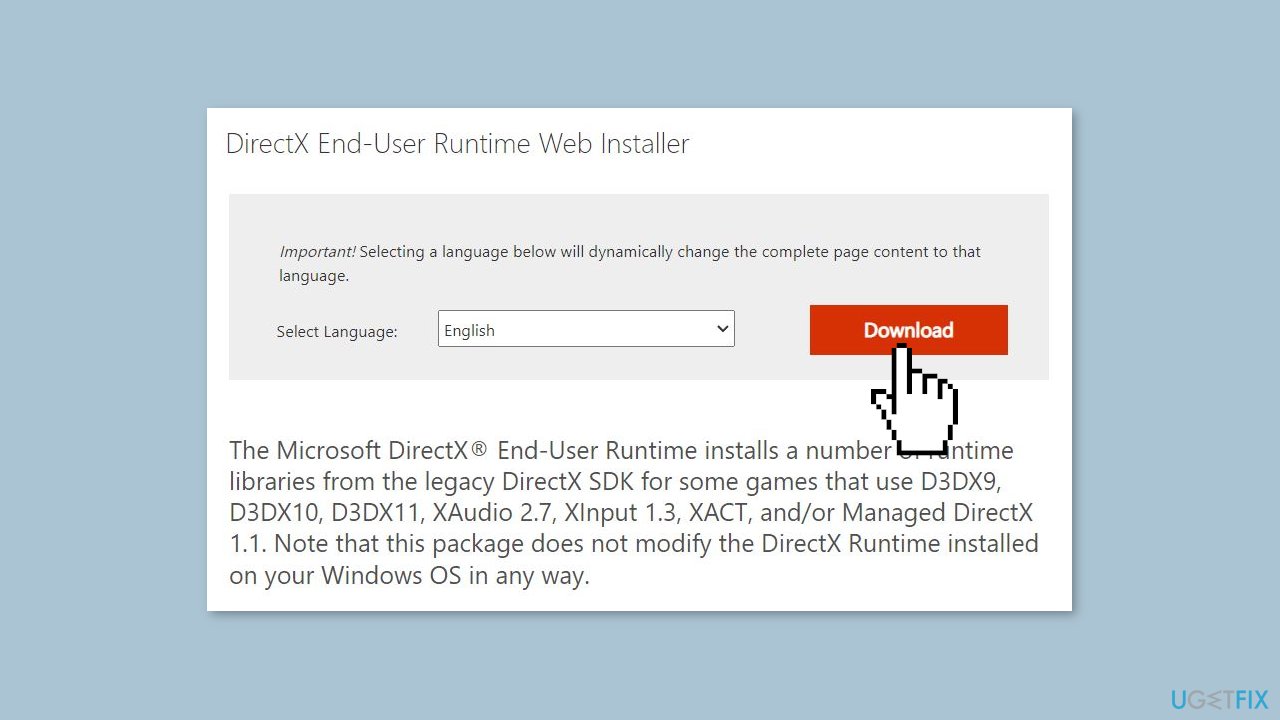
- Click the Download button next to your preferred language to initiate the download of DirectX 12 Web Installer.
- Once the download is complete, locate the downloaded file and run the installer.
- Accept the license agreement by clicking the checkbox.
- Click Next.
- Follow the step-by-step instructions provided by the installer to complete the package installation.
- Reboot your computer to ensure that the changes are applied.
- Launch the affected app to verify that DirectX is working properly.
Method 3. Perform a Malware Scan
It is possible that a malware infection may be the cause of the D3d12.dll missing or not found error in Windows. It is important to run a comprehensive security scan to rule out this possibility and ensure that the computer is not infected. This can help to prevent further issues with the Windows operating system and ensure that it is functioning properly.
If you have access to a security scanner, or if your organization pays for one, you can use it to scan your entire system to check for a virus infection. Otherwise, you can use Windows Defender to scan your system:
- Click on the Windows Start menu or press the Windows key on your keyboard.
- Type Microsoft Defender in the search bar and click on Microsoft Defender Antivirus to open the application.
- Click on the Virus & threat protection option in the left-hand menu.
- Click on the Quick scan or Full scan option, depending on your preference.
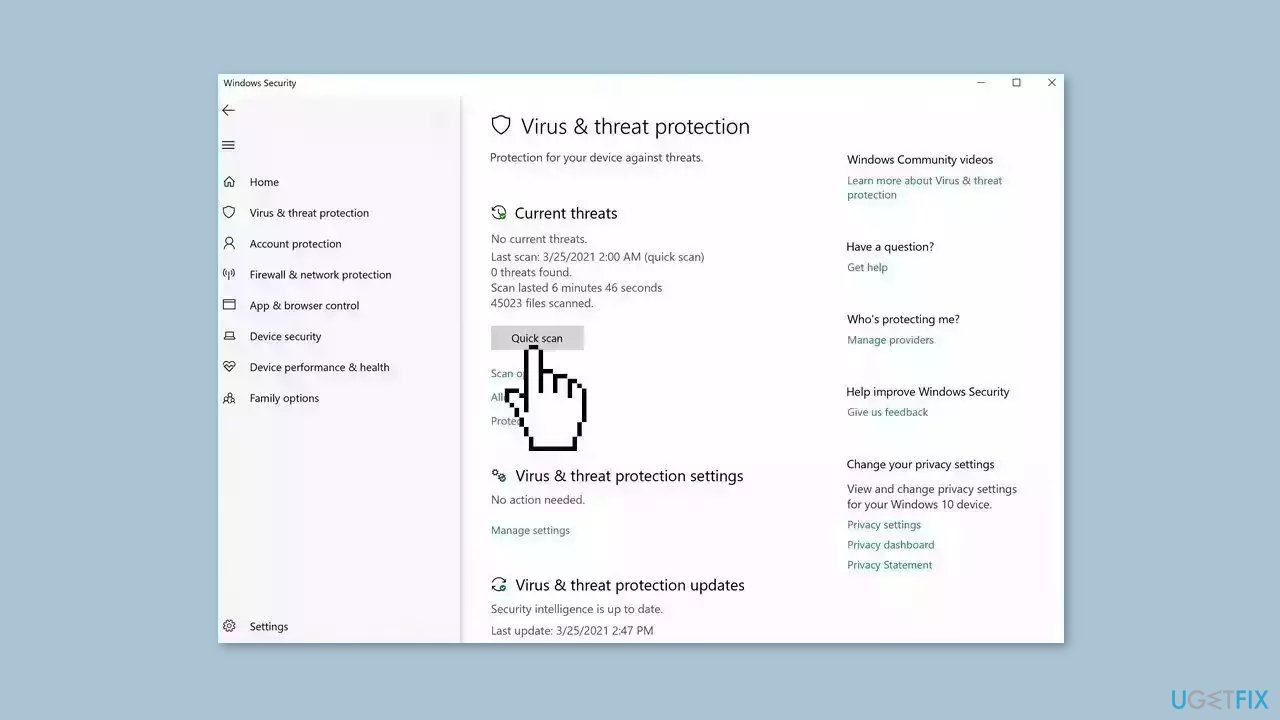
- If you choose Quick scan, Microsoft Defender Antivirus will scan the most vulnerable and commonly infected areas of your computer.
- If you choose Full scan, Microsoft Defender Antivirus will scan your entire computer, including all files, folders, and programs.
- Click on the Scan now button to start the selected scan type and wait for the scan to complete.
- The time it takes will depend on the size of your hard drive and the number of files being scanned.
- Once the scan is complete, you will be informed of any detected threats, and you can choose to quarantine or remove them.
- If no threats are found, Microsoft Defender Antivirus will inform you that your device is secure.
Method 4. Use System Restore
System Restore is a feature in Microsoft Windows that allows users to revert their computer's state to a previous point in time. This can be helpful if you have made changes to your system that are causing problems.
- Press the Windows key + R on your keyboard to open the Run box.
- Type SystemPropertiesProtection and press Enter.
- Go to the System Protection tab.
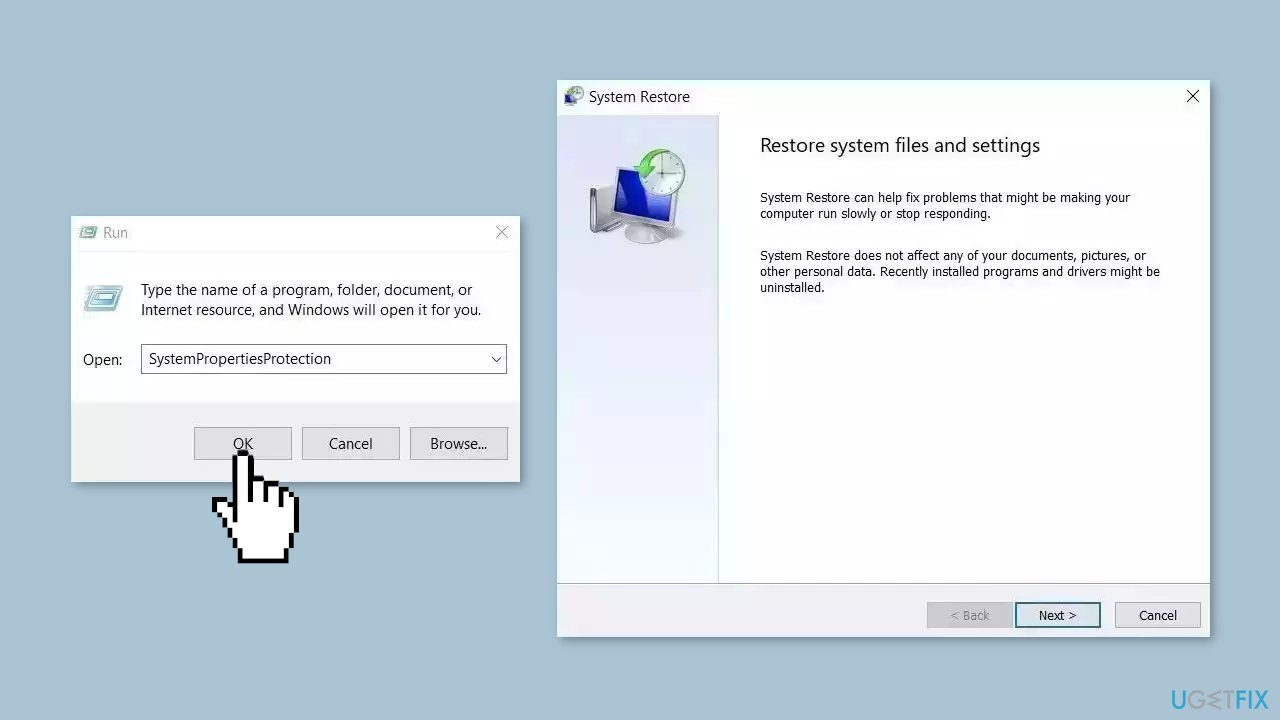
- You will see the System Restore… button. Click it to run System Restore.
- Follow the prompts until you can select a restore point.
- Select the one you want (ideally before the issue started occurring) and go ahead with the process.
Method 5. Reinstall the Affected App
- Press the Windows key + R simultaneously to open the Run dialog box.
- Type appwiz.cpl in the text field of the Run dialog box.
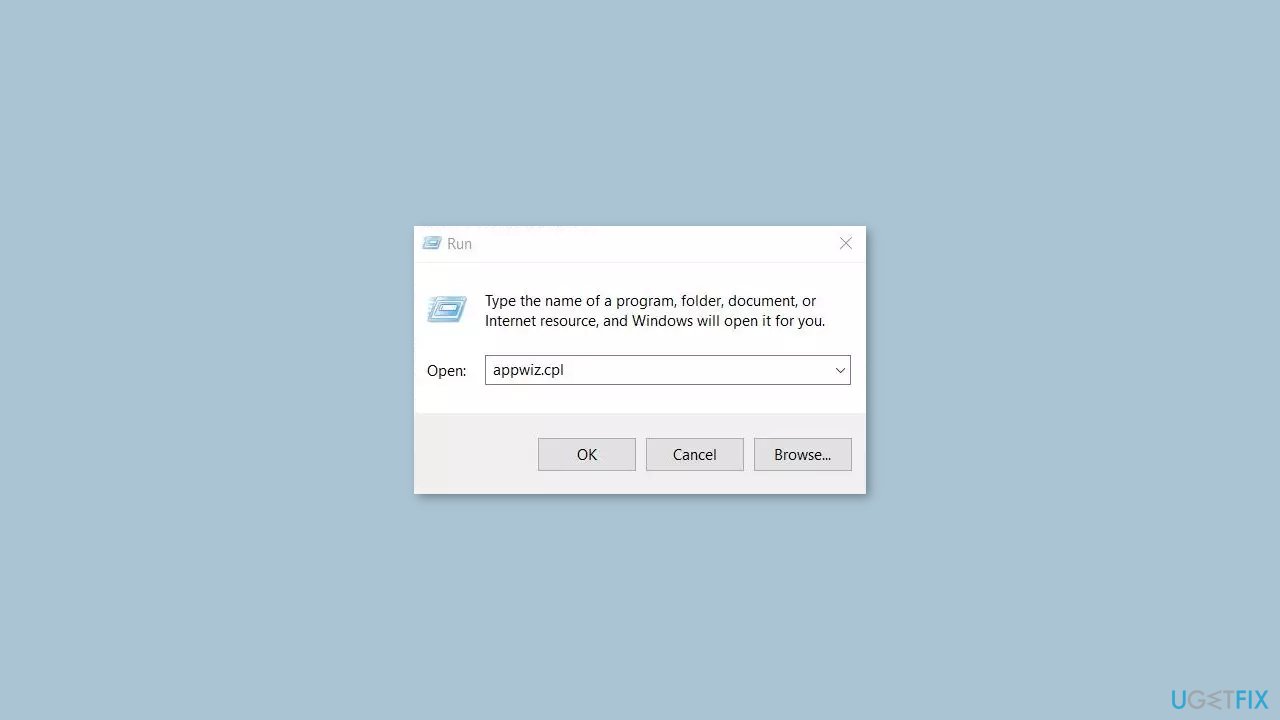
- Hit the Enter key to open the Programs and Features window in the Control Panel.
- In the Programs and Features window, locate the application that is displaying the error.
- Select the application and click the Uninstall button.
- Follow the on-screen instructions to complete the uninstallation process of the application.
- Once the application is uninstalled, open a reliable download source such as the official website or Microsoft Store.
- Download the application again from the source.
- Install the application on your system as per the on-screen instructions.
Method 6. Repair Install Windows
- Visit the official Microsoft website to download Windows 11 or Windows 10 Installation Media.
- Run the Media Creation Tool and select Create Installation Media for another PC.
- Select your USB drive.
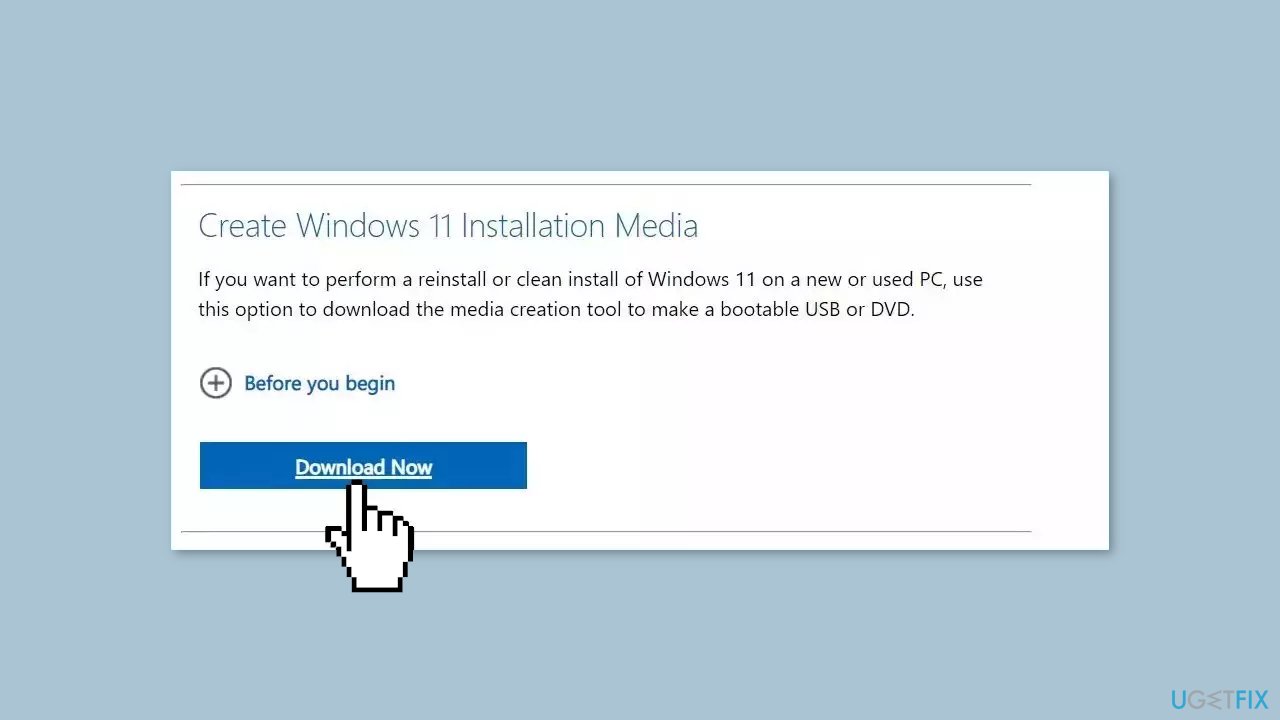
- Let the Process complete of writing the Installation files to the USB drive.
- Click Finish.
- On the PC you wish to upgrade, Press Windows + E to open the File Explorer.
- Open the Removable drive and click Setup.exe.
- Accept the license terms on the next screen.
- Confirm the Upgrade options – Files, apps and Settings are kept.
- Click Install, and the upgrade should start.
Repair your Errors automatically
ugetfix.com team is trying to do its best to help users find the best solutions for eliminating their errors. If you don't want to struggle with manual repair techniques, please use the automatic software. All recommended products have been tested and approved by our professionals. Tools that you can use to fix your error are listed bellow:
Prevent websites, ISP, and other parties from tracking you
To stay completely anonymous and prevent the ISP and the government from spying on you, you should employ Private Internet Access VPN. It will allow you to connect to the internet while being completely anonymous by encrypting all information, prevent trackers, ads, as well as malicious content. Most importantly, you will stop the illegal surveillance activities that NSA and other governmental institutions are performing behind your back.
Recover your lost files quickly
Unforeseen circumstances can happen at any time while using the computer: it can turn off due to a power cut, a Blue Screen of Death (BSoD) can occur, or random Windows updates can the machine when you went away for a few minutes. As a result, your schoolwork, important documents, and other data might be lost. To recover lost files, you can use Data Recovery Pro – it searches through copies of files that are still available on your hard drive and retrieves them quickly.
- ^ DirectX. Wikipedia, the free encyclopedia.
- ^ Chris Hoffman. Everything You Need To Know About the Blue Screen of Death. Howtogeek. Tech Insight Magazine.
- ^ Tim Fisher. What Is the Windows Registry?. Lifewire. Software and Apps.



